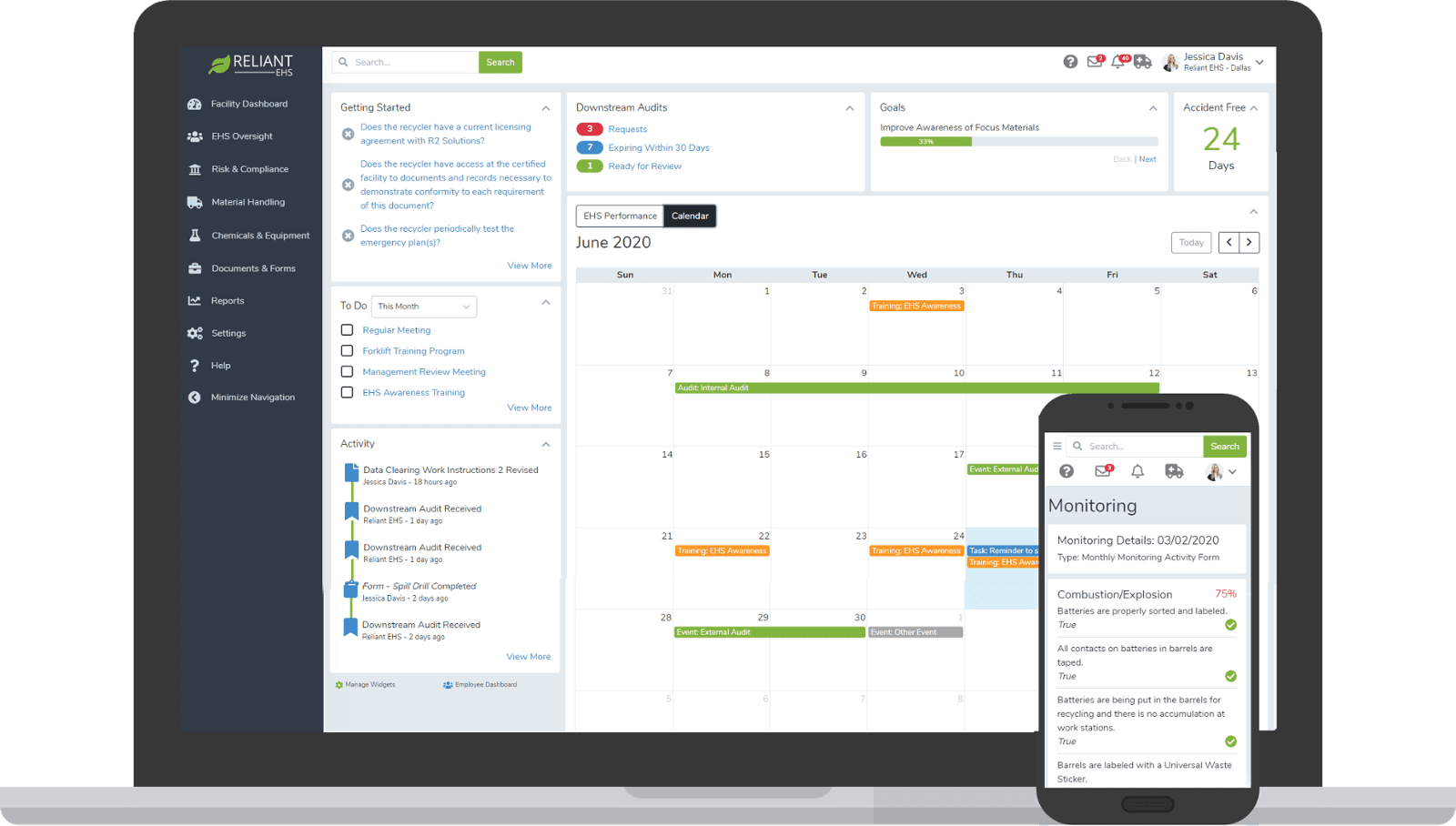With more and more of us working remotely in the light of the COVID-19 outbreak, it has become more apparent than ever before that the ability to deliver real-time mission-critical information, documents and resources anywhere, anytime and company-wide is key to a successful EHS program.
There are several ways to improve access to EHS resources. Preparing to ensure continuity of access before a crisis is ideal, however, its never too late to improve your current strategies to be better prepared for the future.
How to Improve Access to EHS Documents and Records
- Identify any EHS documentation that is maintained only in paper records.
- Is there a requirement which mandates that a physical copy of this record must be maintained?
- Is there a concern about access control which drives non-digital record retention?
- Is there an opportunity to retain a digital copy of the information?
- Identify any EHS documentation that is maintained digitally but only accessible from the office.
- What is driving the decision to maintain files locally instead of in a shared location?
- Does your company have an online file-sharing service where this information can be maintained?
- Do all employees who reasonably need access to these files have access (without having to request it from the owner of the resource) currently?
- Identify a location to store EHS documents and resources so that they can be accessed by your staff from any location.
- When evaluating a file-storage solution you should work with your IT staff to consider the following:
- Does the system allow for access controls so that documents can be made accessible to employees appropriately based on sharing only the information they need to perform their jobs?
- Does the system have any limitations for how much data can be stored? If so, cost comparison between vendors may be a factor to consider.
- Plan to organize your content in a way that is easy to navigate so users can quickly find what they are looking for and set up your file structure using folders.
- Upload and share your files with your team.
- Start by uploading files that are already stored digitally.
- Next, digitize any paper-records - type or scan the existing records.
- Plan strategies to minimize paper records by creating and maintaining digital copies whenever possible.
Going Beyond Documents and Records
The first step to making your EHS documentation more accessible is to remove barriers to accessing documents and records off-site. The next step is to go beyond documents and records and provide cloud-based access to things like downstream vendor audits, internal audits, monitoring records, meeting records, goals, corrective action requests, etc. and to allow users to enter these records digitally - shortening the amount of time between record completion and record availability by making your EHS data real-time.
Many of the same considerations should go into considering this next step in modernizing your EHS program:
- How is information secured?
- Are there access controls?
- Are there approval processes in place for EHS staff to review records entered?
- Is there built-in revision tracking for documents?
- Can forms for data entry be configured to match current forms and processes?
- Will the system address the majority of processes which require paper records currently?

Let us show you why EHS managers choose Reliant EHS.
